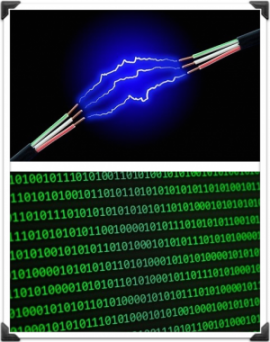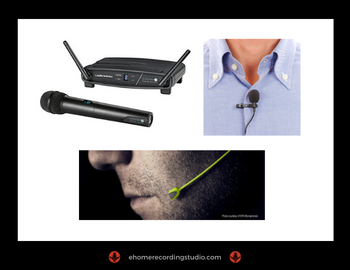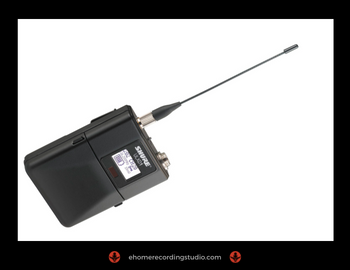
Today’s topic: Wireless Microphone Systems for Live Performing.
Yes — it sounds intimidating, I know. But I promise, it’s really not that hard — once you understand the secrets you’re about to discover in this post.
Secrets including:
- The Single Most Common First Question Asked: I don’t get it — what’s the difference between UHF and VHF?
- Handheld vs Lavalier vs Condenser Mics – The pros and cons no one ever talks about.
- Bodypack vs Handheld Transmitters – Get this one wrong and it could end up costing you a lot of time and money.
- And Finally… Our Top Recommended Wireless Mic Systems in Each and Every Category — with something perfect for everyone.
Best Part: I guarantee that by the end of this post, you’ll know more about this topic than 99% of performing musicians, and (if you want) — have your perfect rig ordered and on the way to your house.
UHF vs VHF Wireless Microphone Systems

Each wireless microphone system transmits and receives on a specific radio frequency (aka operating frequency).
These two frequency categories are:
- UHF (Ultra High Frequency)
- low-band – 450-806 MHz
- high-band – 900-952 MHz
- VHF (Very High Frequency)
- low-band – 49-108 MHz
VHF is the cheaper of the two options, and is also used by:
- cordless telephones
- walkie-talkies
- radio controlled toys
All the competing signals on these VHF bands introduce radio frequency (RF) noise, and make your signal more prone to dropouts.
Antenna sizes on VHF systems tend to be larger as well, which reduces their portability.
The one advantage to VHF systems is that the lower transmitting frequency allows you to send a signal without having a “line-of-sight” between transmitter and receiver.
UHF Systems on the other hand, have the advantage in virtually every other way:
- better range
- less interference and dropouts
- better sound
- more channels (4+)
For these reasons, UHF systems are always more expensive.
Up next…
Analog vs. Digital Wireless Microphone Systems

The wireless signal can either be sent in either digital or analog form.
Digital systems have the advantage of cleaner sound with a wider dynamic range.
Analog signals on the other have the advantage of being cheaper, and allowing for more simultaneous channels (10+).
High-end digital wireless systems, which typically run on the 900 MHz or UHF band, offer the best of both worlds: sound quality and channel count, but at a higher cost.
Up next…
The 3 Components of Wireless Mic Systems

Now that we know the important system features to be aware of, let’s move on to its individual parts.
All wireless mic systems consist of these 3 basic components:
- The Microphone – which picks up the audio.
- The Transmitter – which receives the mic signal and sends it to…
- The Receiver – which sends the signal to the PA system
So next up, we’ll cover each of these in more detail, starting first with…
1. The Wireless Microphone (3 Types)

Depending on your purposes, there are 3 wireless microphones you might choose:
- Handheld (Dynamic) – which is best for live concert singing, and passing around to multiple speakers
- Lavalier (Condenser) – which are best when you want the microphone to be invisible, like in broadcasting. The biggest downside of these mics is that they are prone to rustling noises from movement.
- Headset (Condenser) – which is best for hands-free movement, such as dancing, walking around, or fitness instruction.
In terms of performance, headset microphones beat lavalier mics in almost every way.
- They offer greater gain before feedback
- They’re easiest for sound techs to set up
- They’re easiest for performers to use.
Another important fact to know is the polar pattern of these 3 microphone types.
Handheld mics have a cardioid pattern, meaning they only pick up sound in the direction you point them.
Lavalier and Headset mics on the other hand, have an omnidirectional pattern, meaning they pick up sound equally from all directions.
Next up…
2. Wireless Microphone Transmitters (2 Types)

Depending on your needs, there are 2 types of transmitters you might prefer:
- Handheld – which are paired specifically with handheld mics, often as part of the handle.
- Bodypack – which are connected by wire alongside either lav or headset mics.
So with this component of the system, there are really no decisions to be made. Whichever mic type you choose, will come pre-paired with its transmitter.
With better systems though, certain premium transmitter features offer better performance. High-end models for example, will transmit on less “busy” frequencies for a cleaner signal.
Next up…
3. Wireless Microphone Receivers

With this component, there are 4 performance factors to consider:
- The Display – which keeps you informed of the receiver’s status.
- Encrypted transmission – which protects from signal hacking.
- Frequency Agility – which auto-selects the best frequency in different situations (as opposed to fixed-frequency, which can’t)
- Diversity Circuitry – which refers to its ability to avoid signal dropouts through redundancy.
The 3 levels of Diversity are:
- Non-Diversity (lowest) – 1 antenna + 1 receiver
- Diversity (better) – 2 antennas + 1 receiver
- True-Diversity (best) – 2 antennas + 2 receivers
Multiple antennas and receivers protect against dropouts by automatically switching to whichever signal is cleaner at that moment.
The added cost of this feature may or may not be necessary depending on conditions such as:
- Venue Size
- Physical Obstructions
- Transmitting Distance
- Signal Interference
The more difficult the conditions, the more you will have to spend to get a reliable signal.
- With cheaper systems – you can expect a range of as low as 100 ft.
- With pricier systems – expect a range as high as 1000 ft.
A good rule of thumb is choosing a wireless system with a stated operating range twice the distance you think you need.
Up next…
Our Top Recommended Systems
So at this point, we’ve covered everything you need to know to choose the perfect wireless microphone system for your budget and needs.
And to help you out, we’ve included links to the top current models, organized by TYPE of microphone.
HANDHELD Systems
- Phenyx Pro (handheld+lavalier+headset) – (Amazon)
- Tonor TW-820 – (Amazon)
- Shure BLX1288/P31 – (Amazon/Thomann)
- Sennheiser XSW 1-835 – (Amazon/Thomann)
- Sennheiser EW 135 G3 – (Amazon/Thomann)
- Shure QLXD24/85+SM58 – (Amazon/Thomann)
- Shure QLXD124/85+SM58 and Lavalier mic – (Amazon/Thomann)
LAVALIER Systems
- TTStar UHF Wireless Microphone – (Amazon)
- Rode Wireless GO II + Lavalier Kit – (Amazon)
- MAYBESTA Lavalier for iOS devices – (Amazon)
- Shure BLX14/CVL – (Amazon/Thomann)
- Sennheiser EW 112P G4 – (Amazon/Thomann)
- Sennheiser EW 512P G4 – (Amazon)
HEADSET Systems
- UHF Wireless Headset w/Accessories – (Amazon)
- Bietrun UHF – (Amazon)
- Senal Omni Earset – (Amazon)
- Shure BLX14/P31 – (Amazon/B&H/Thomann)
- Shure Fitness Headset Complete Kit – (Amazon/Thomann)
- Sennheiser HSP4 EW 3 (Mic Only) – (Amazon/Thomann)
A QUICK NOTE on Mixing Components
Many musicians wonder at some point, whether or not it’s possible to mix and match different microphones with different transmitters and receivers.
While it is sometimes POSSIBLE, it’s not RECOMMENDED. And here’s why:
Wireless microphones use a process called companding which compresses the transmitted audio signal at the microphone then expands it at the receiver to restore the original dynamic range.
Because of the fact that this process varies between models and manufacturers, you want to use your system as it was originally packaged…for best performance.
By the way, if you found this post useful, I highly recommend joining our free Home Recording Secrets email newsletter where you’ll discover….
- How to Get Your First Studio Up and Running in a Single Weekend
- How to Avoid Wasting Thousands of Dollars on Unnecessary Pointless Purchases
- How to Get a “Million Dollar” Pro Studio Sound in a “Thousand Dollar” Home Studio
- PLUS… All Sorts of Other Amazing Insider Secrets Revealed
And it’s totally FREE! Click here and Enter Your Email to Sign Up.